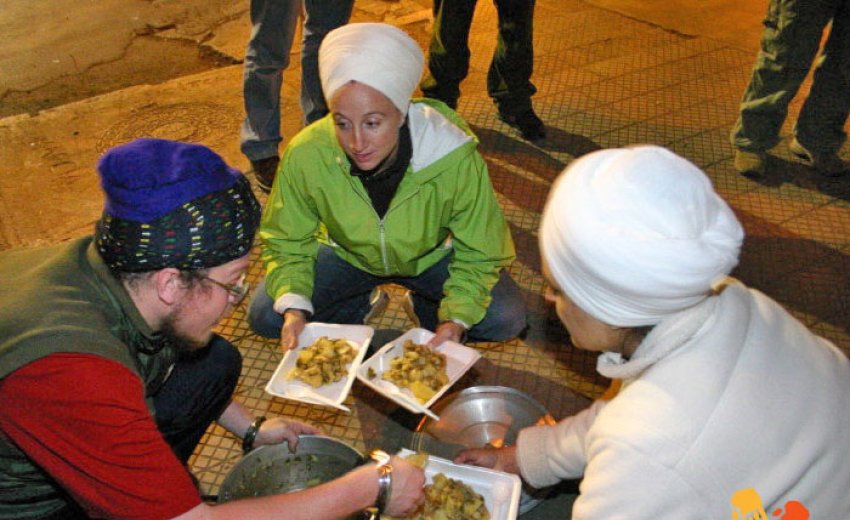Growing up as a Sikh kid I was inculcated with much information regarding various historical events and topics pertaining to Sikhi. I read the inspiring stories of Banda Singh Bahadur, Guru Gobind Singh Ji, and many more valiant Sikhs. Back when the fundamentals of Sikhi were still developing, that was when Sikhi was at its strongest. Sikhs were unified, they understood the importance of being united under the Guru.
One historical event I find very inspiring and motivating is the Battle of Saraghari; when 21 Sikh soldiers killed 600 Afghanis. That battle demonstrates the power of Chardi-Kala (ever uplifting optimism.) Sadly, today I have little hope that 21 Sikhs could succeed at a similar task. Back then, Sikhs truly embodied the concept of Sant-Sipahi (Saint-Soldier), remembering Waheguru at all times but simultaneously ready to rise up in arms to defend the Kaum (community.)
Today, I feel that concept has gotten out of balance, in the sense that Sikhs have slowly started to shy away from the Sipahi part of the concept. But there is a solution, mainly for Sikh children which I offer in the book I wrote: ‘Bullying of Sikh American Children: Through the Eyes of a Sikh American High School Student.’ All Sikh kids should trainl in Martial Arts, which not only boosts self-confidence and self-esteem but also ignites the Sipahi spirit. But, we can’t forget the uniquely Sikh Martial Art, Gatka, which all Sikhs should practice anyway.
Another contemporary phenomenon I have noticed more and more in Gurdwaras is members of the Sangat doing certain things which tend to lean more to ritualism than religion. For instance, Sangat members will circle the Nishaan Sahib, and ‘ Matha Tehk’ in front of the entrance of the Gurdwara. To someone who has grown up in America and has been taught that Sikhs do not partake in any sort of ritual, it seems a bit odd witnessing these events.
Gurdwaras have also started celebrating Diwali which has no significance in the Sikh Faith and is a Hindu Holiday. Along with that, many Sikhs have gotten into Raksha Bandan or Rakhri, which again has nothing to do with Sikhi. If we apply logic to Rakhri, why should women seek protection from men? Are they not able to defend themselves? What happens if the man is not able to come to help the woman? In Sikhism, men and women are equal. Formally initiated ‘Amritdhari’ Sikh women carry kirpans so they can defend themselves.
When we think of the word ‘Seva’ what comes to mind? Helping at langar one Sunday? While that is good to do, that type of Seva is not seen at all by the larger American community. The same people that end up racially profiling Sikhs and ridiculing them. If we as a Sikh community do not actively engage with our communities OUTSIDE the Gurdwara and serve them, then the process of everyone accepting us will only get delayed.
If we want to continue to make a difference in this nation, we must promote Sikhi and its ideology. Just as Guru Nanak Ji did when he would speak in front of congregations. Some Sikhs say we can’t proselytize, and that is true, but there is a very distinct difference between trying to convert someone and informing them of our faith.
There are so many benefits to spreading the basic principles of Sikhi in our communities wherever we may be. For example, just recently a gentleman approached my father while we were outside doing yard work, he shook hands with my dad and said ‘Ki Haal Hai?’ Coming from a non-Sikh, Catholic man, my father and I were astonished. Later we learnt that he had been regularly going to a local Gurdwara. He was also wearing a Kara and he said to us, “I’m a Sikh too!”
Now, more than ever, is the time to start interacting with fellow Americans. Especially with the recent political rhetoric, Americans are frustrated and confused. That’s why it is crucial that, as Sikhs, we do our part to continue doing positive work and visibly serving people. It could be providing langar at a public event or it could be attending a teacher’s convention to educate teachers about the Sikh Faith. There are so many ways Sikhs can engage in activism. Let us all make a commitment today to continue spreading the good values our faith teaches us through positive work. When people see our turban, let them see a smile, an open heart and a helping hand as well.





